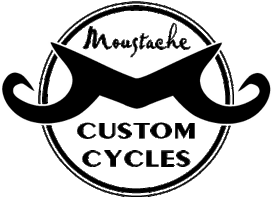This was a fun beginning to a much bigger project that came about when the man behind Dapper Dre Enterprises mentioned that he liked the look of bikes that were more classic and angular. He mentioned liking a bike I made some years ago, so after our conversation I revisited that bike and the blog entry I posted about it, HERE. It was a traditional level top tube touring bike, but the plate crown fork stood out, so why not revisit that. I re-read that post and at the time had concluded not to make one of those for a good long while, or until I have a mill. Yeah, I remember now why, drilling out matching holes in plates with a drill press and then filing them to round sounds like a terrible idea. At least I raked the blades to achieve offset rather than angling the holes at the crown...you can probably see where this is going. Anyway, fork now complete, my favorite comment about it so far came in the form of "How the f^@k did you make that." Well it took a while but here are the basic steps.
Lots of time went into the working drawing and pre-planning and angles were calculated rather than measured. I periodically have to recall those high school trig classes out there in the shop and this fork required several of those old formulas...really practical math, folks. As well I cut a new die for the crush bender to form the lower plate; the upper is the railroad track die used to bend the yoke on Joe's Murray in the last post.
This thing came in handy for once. The Palmgren 400 lathe milling attachment. I picked it up at my local machine supply, Quality Tool, about a year ago in serviceable condition for $100 and haven't touched it other than to clean up and oil. I bought it initially thinking it would be the tube mitering station, but quickly thought better of it, things just didn't quite compute. And yes, Flagstaff has a machine tool store even though it doesn't really have too many machines, and I won't bother linking you to it because the guy that runs it is even more of a techno-luddite than I am, so you can find him in the yellow pages, or just drop by, he is there, tucked into the corner by the beauty college with barely even a sign. Yesterday I picked up a Kennedy tool box loaded up to the gills for not too bad either.
Steerer hole cut into plates and tacked against the crown race seat. The top plate will actually serve as the crown race seat the sleeve is just to give the proper O.D for the race's press fit. This whole sub assembly is then sweated with brass and cleaned up.
Time to make the holes for the legs. Calculations for rake and crown to hub widening are programmed on the Palmgren and the compound slide respectively. Then marks are centered before cutting.
Holes cut....I almost lost it here. The expansive angle to the hub was set for the other side so my cut went the wrong way. Luckily, the metal to the inside (steerer tube side) of the hole was all still there and the 1.625 degree angle of cut was not enough to drastically affect my canvas. At this point I still didn't have much of an idea of how the fork was going to look in the end, but with the mis-cut I started getting the idea. I would have to close that gap in at the outside, just like any old lug point.
The rounding cuts were added while in the lathe followed by much manual sculpting. The closed holes were carved into lug points and made for some fun tight quarters brazing.
Looking forward to seeing this with a layer of paint and then all done up on the bike which is in process as I type this. Lots of work into this one!























